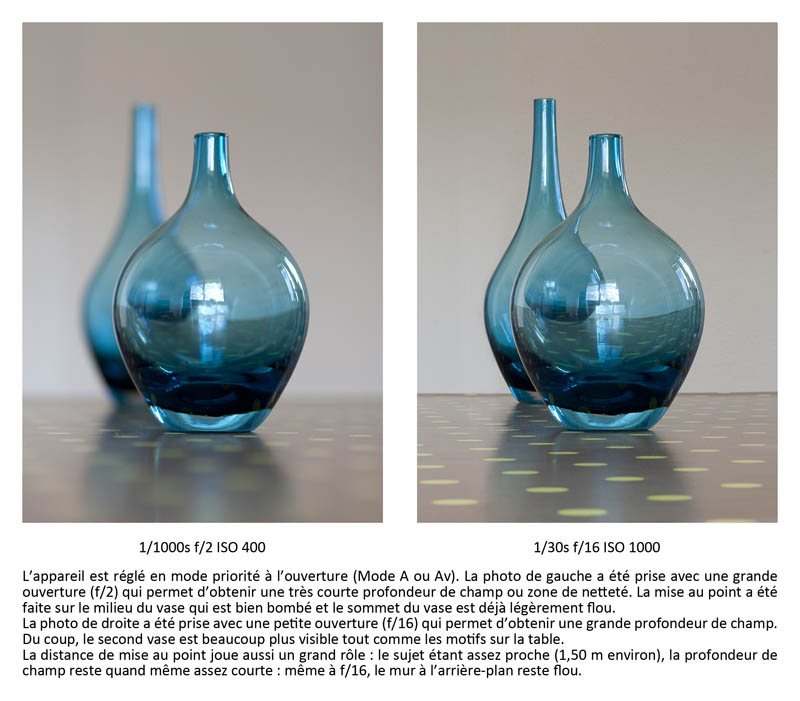Depth of field is the area either side of the focal distance where objects still appear sharp. . Controlling depth of field is a key part of how you interpret the world that you are photographing.
Handy tips
- A shallow depth of field separates all or part of a subject from their surroundings, which will be blurred (useful e.g. for portraits).
- A large depth of field will mean that various layers or planes are in focus (for landscapes).

1. How it works
Depth of field is affected by three settings: diaphragm aperture, focal distance and focal length.
To summarise:
- The smaller the aperture (e.g. the higher the f/ rating), the larger the depth of field.
- The larger the aperture (e.g. the lower the f/ rating), the shallower the depth of field.
- The further the focal point, the larger the depth of field.
- The nearer the focal point, the shallower the depth of field.
- Depth of field depends on the focal length of the lens in question and will be larger when using a wide angle lens compared to using a telephoto.
- Depth of field always extends 1/3 in front of the focal point and 2/3 behind.
Hands on: A or M modes
A mode is ideal for accurately setting the aperture (and hence depth of field). Your camera will then set an appropriate shutter speed.
2. Focusing
- Focus by pressing and holding the shutter release button half way to fix the focus.
- Move the camera (or yourself) to frame the shot as required.
- Press the shutter release button all the way to take the picture.
Tip
With long focal lengths or subjects near to the camera, a shallower depth of field will be obtained. Therefore, before pressing the shutter release button half way, check your balance to ensure you don't move backwards and forwards. This could shift the focal point, resulting in a blurred subject.
3. Testing depth of field: the magic button
Most SLRs have a test depth of field button that will allow you to preview the actual depth of field through the viewfinder. Press the button and the diaphragm will be stopped down to the value set in your camera. Note: the image through the viewfinder will probably appear darker. Check your manual to see where this button is on your SLR.
4. Be careful of the shutter speed
To obtain very large depths of field, stop the diaphragm down to f/11, f/16 or even f/22. The exposure time will be increased.
- Watch out: the photo may be blurred if you are operating the camera hand held and using a shutter speed slower than 1/60s.
- If necessary, increase the ISO sensitivity or use an image stabiliser.
- Otherwise, steady the camera with a tripod or place it on a sturdy base (e.g. a bag, box or… friendly shoulder).
Recommended product:
Discovery packs
See also :
Photography
Photography: Composing your shot
